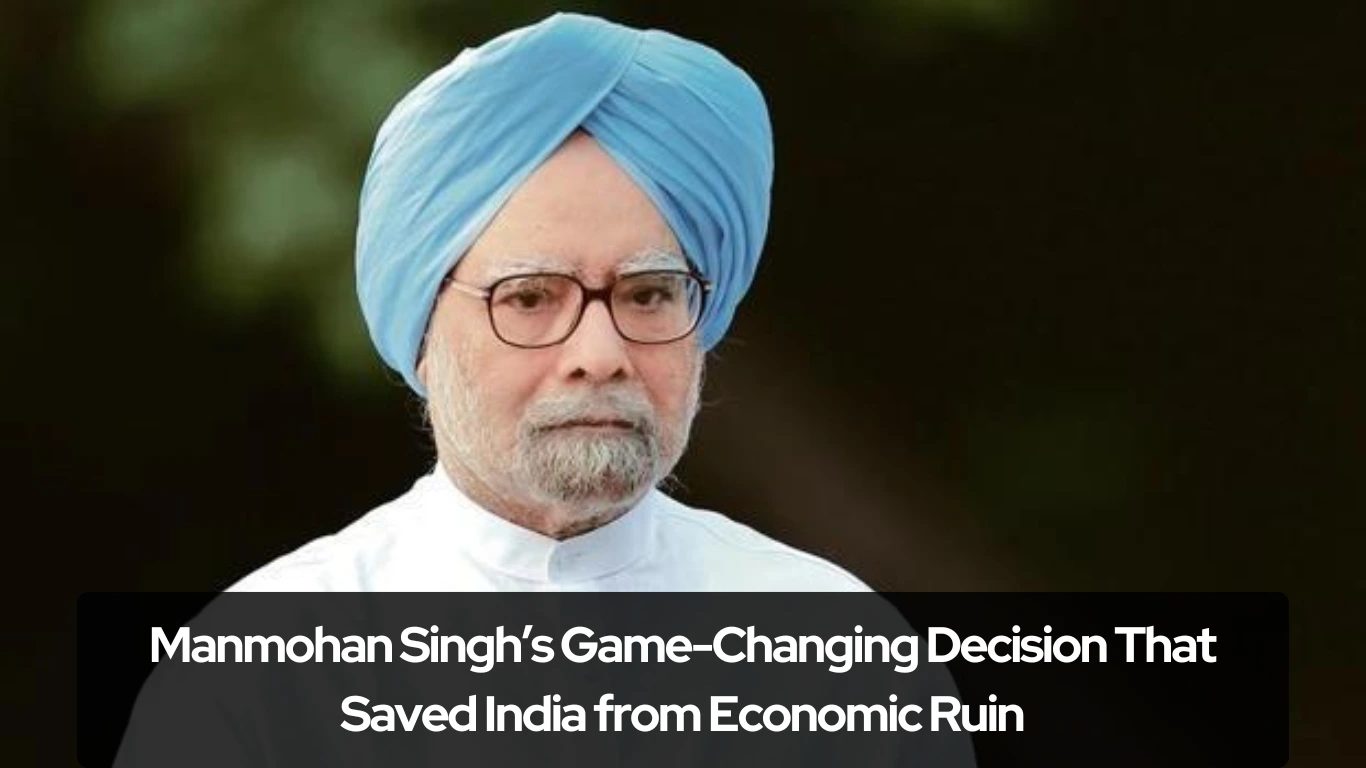Dr. Manmohan Singh, one of India’s most revered leaders and a key figure in the country’s economic revival, celebrates his birthday today, September 26. As a former Prime Minister of India and the architect of India’s economic liberalization, his legacy is deeply intertwined with the nation’s prosperity. His visionary decision in 1991 is considered one of the most significant turning points in India’s economic history.
Had Singh not made this critical choice, India could have faced severe financial instability. Let’s revisit the bold move that saved the country from the brink of economic disaster and transformed its future.
India in 1991: A Nation on the Edge of Bankruptcy
The year 1991 was a pivotal moment for India. The country was on the verge of bankruptcy, with foreign reserves depleted to the point that they could only cover 15 days of imports. Essential goods such as petroleum, medicines, and electronics were running out, and India faced a looming crisis. To keep the economy afloat, India sought financial assistance from the International Monetary Fund (IMF) and several European countries.
At that time, P.V. Narasimha Rao was the Prime Minister of India. Recognizing the gravity of the situation, he appointed Dr. Manmohan Singh as the Finance Minister. Singh’s vast knowledge of economics and international finance made him the ideal candidate to handle the crisis.
The Conditions from the IMF and Europe: The Need for Change
In exchange for financial aid, the IMF and European countries imposed stringent conditions on India. They demanded that India open its doors to foreign companies and allow them to operate freely in the country. This marked the beginning of India’s liberalization, privatization, and globalization (LPG) reforms.
For a country that had been following protectionist policies, this was a radical shift. However, Manmohan Singh understood that drastic times called for drastic measures. He agreed to these terms, knowing that this decision would not only save India from immediate economic ruin but also lay the foundation for its future growth.
The Birth of Economic Reforms: India Embraces Liberalization
The LPG reforms introduced by the government allowed foreign and private companies to operate in India. The government reduced its control over businesses, encouraging competition and innovation. These reforms opened up new avenues for investment and job creation, accelerating India’s path to becoming a global economic player.
- Liberalization: Reduced government regulations and allowed businesses to flourish with fewer restrictions.
- Privatization: Encouraged private sector participation in industries that were previously state-controlled.
- Globalization: Opened India’s doors to foreign investment, technology, and markets.
This policy overhaul marked a new chapter in India’s economic journey. The reforms spurred industrial growth, increased foreign investments, and improved infrastructure, ultimately transforming India into one of the world’s fastest-growing economies.
Safeguarding National Interests: Strategic Sectors Remained Under Indian Control
While the Indian government accepted the terms of the IMF and European countries, it also set its own conditions. The government ensured that certain strategic sectors remained off-limits to foreign companies. These included:
- Defense
- Space exploration
- Railways
- Petroleum industries
This strategic foresight allowed India to protect its core industries while still benefiting from foreign investments in other sectors.
The Outcome: How One Decision Changed India’s Future
Dr. Manmohan Singh’s decision to implement the LPG reforms is widely regarded as one of the most important milestones in India’s economic history. By accepting the conditions of the IMF and European nations, Singh ensured that India avoided immediate economic collapse and embarked on a path to rapid growth.
Today, India is a leading global economy, with a strong industrial base, thriving technology sector, and a robust service industry. Much of this success can be traced back to the vision and leadership of Dr. Manmohan Singh during those critical years.
Honoring Manmohan Singh on His Birthday
As we celebrate Dr. Manmohan Singh’s birthday today, it is important to recognize his immense contributions to India’s economic development. His bold and courageous decisions in the face of adversity have left an indelible mark on the country. From steering India through a severe financial crisis to laying the groundwork for its future prosperity, Singh’s legacy is one of visionary leadership and dedicated service.
Conclusion: A Lasting Legacy
Dr. Manmohan Singh’s leadership in 1991 saved India from the brink of economic disaster. His decision to embrace economic reforms was not just a short-term solution; it was a long-term strategy that transformed India into a global powerhouse. On his birthday, we honor his extraordinary contributions and the enduring impact of his policies.

